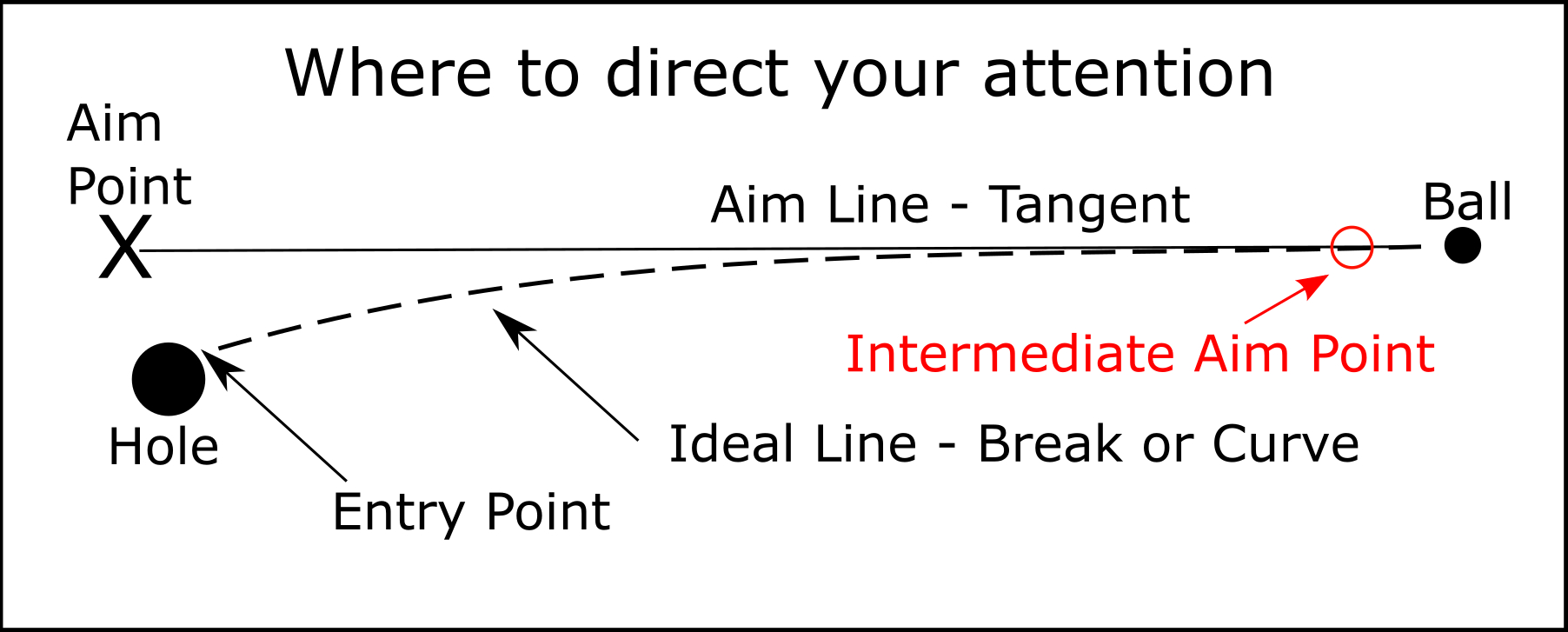I’ve been using an intermediate aim point for my full swing since I began golfing. In putting, I do the same thing. The intermediate target is something much closer the ball and helps improve your accuracy.
An intermediate aim point on the green usually is a discoloration in the green or mark of some kind just in front of the ball. It’s what you want to roll the ball over on your aim line.

Why does it make sense to use a second target if you already have an aim point adjacent to the hole?
It’s much easier and more accurate to align the putter square to a target just in front of your ball than a target 40 feet away.
Even on shorter putts it just makes sense to square your putter face and align the putter to something close.
I like to have that intermediate target in my line of sight without looking away from the ball.
Let’s go over the whole routine.
Green Reading
- Start reading the green from the fairway
- Walk along the low side of the putt. Look closely at the slope and feel it with your feet. I like to walk off the distance to the hole on the way there.
- Stop at the hole and find the fall line. In other words, which way would water run off the green. The low side if you will.
- Move behind the hole. I like to look back at the ball and see the break. I also take a good look at the general area around the hole to determine where the “good miss” would be.
- Looking back at the hole, determine if there is another break line or elevation change.
- When there is a second break or ridge I like to know the distance to that change. Walk off the distance from the hole to the ridge or break and then walk off the distance from that change to the ball.
(Example: Uphill putt with a left to right break. The last 5 feet are downhill. It’s a 15 foot putt total. My focus would be on the uphill 10 foot part. Aim above the hole. If it misses it will most likely roll out low. Leaving an uphill second putt.) - From behind the ball check the slope, break and aim point once more.
Making the putt
- You know it’s an uphill 10 footer with 5 feet downhill at the end. The aim point is near the hole.
- Now focus closer.
- Using the line on the ball, align the ball with the aim point next to the hole and an intermediate aim point just in front of the ball. I try to see the aim line between those two points.
- To verify the line, hold your putter up using the shaft to line up your primary and secondary aim points.
- Parallel to your aim line, take two practice strokes to gauge the proper pace for the putt.
- Step in and place the putter behind the ball, square it up to the line on the ball and the intermediate aim point.
- Then take your stance and one last look at the hole
- Looking at the back of the ball… let the magic happen.
(I bounce the putter lightly and pull the trigger. During the stroke… I count to myself, 1000 – one no matter how long the putt is.)
While there are lots of steps in green reading and alignment, limit your thoughts right before you putt.
Think positive. Make a confident stroke.
Having an intermediate target or aim point allows you to start the stroke with better putter alignment.
The bottom line is you will become more accurate and make more putts.
